Why Do You Need to Increase Disk Space?
Disk space plays a crucial role in the operation, performance, and stability of a computer system. It is the computer’s long-term storage space, where all permanent data is stored.
When your current storage capacity is full or nearly full, it can hinder your computer’s efficient operation. The following specific signs and situations indicate that you should add disk space:
- A low disk space warning appears.
- The storage bar is highlighted in red by Windows Explorer.
- Your computer suddenly becomes slow, laggy, or frequently crashes.
- Installing new programs, games, or large software updates fails due to insufficient storage space.
- When trying to save documents, photos, or downloaded files, you receive error messages indicating that the file cannot be saved or the disk is full.
How much storage do you need on your PC? Before increasing disk space, you’ll certainly want to know how much storage your hard drive needs to ensure your computer runs smoothly.
The required storage space depends on your usage:
- 256 GB is sufficient for basic needs such as web browsing, email, text documents, and streaming media.
- 512 GB is sufficient for everyday use, including documents, photos, music, and some programs.
- 1 TB or more is sufficient for gamers and creative professionals to store high-resolution photos/videos, large games, and design software.
Now, follow the methods below to increase disk space on your computer.
Method 1. Free Up Disk Space
When talking about increasing disk space, the first thing you should try is to free up disk space to reclaim used space without adding new storage. Here are some measures to free up:
- Delete unnecessary files
- Manage Windows storage settings
- Configure System Restore settings
- Make OneDrive files online only
- Compress large files
- Disable Hibernation
Method 2. Extend Existing Partition
To expand storage capacity, you can reallocate the existing partition if you have unallocated space on your disk. Here are 3 tools.
#1. Disk Management
Disk Management is a basic tool that works if the unallocated space is right and adjacent to the C: drive. Or, the Extend Volume option is greyed out. Here are the steps:
- Press Win + R, type diskmgmt.msc, and press Enter to open Disk Management.
- Right-click the drive to extend and choose Extend Volume from the context menu.
- Specify the amount of unallocated space to add.
- Click Next and then Finish.
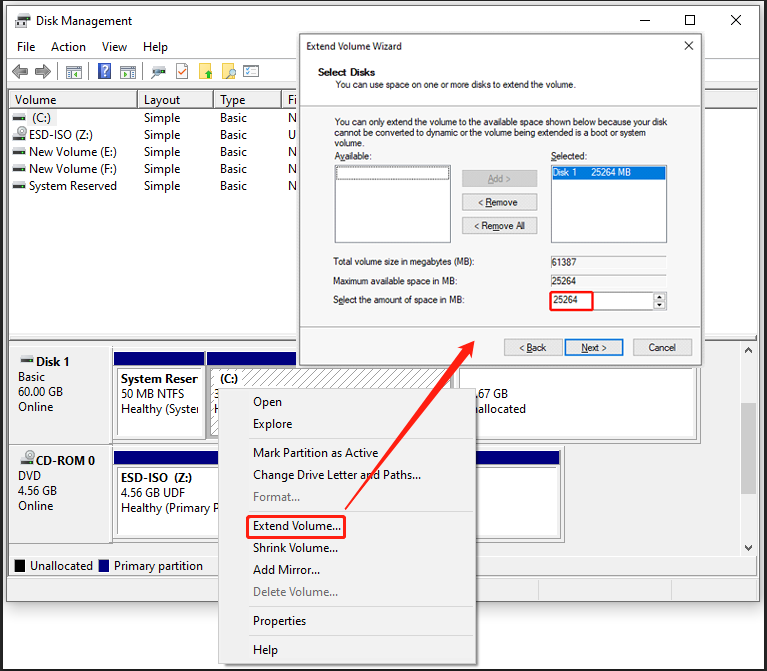
#2. MiniTool Partition Wizard
MiniTool Partition Wizard, a free partition manager, provides 2 features to help you increase disk space easily.
- Extend Partition: This feature can directly take free space from any other existing partitions or unallocated space to expand a partition on the same disk.
- Move/Resize Partition: This feature is suitable when there is unallocated space before or after the partition.
Now, download and install MiniTool Partition Wizard on your computer. Then, follow the steps below to get enough disk space.
MiniTool Partition Wizard FreeClick to Download100%Clean & Safe
Extend Partition
- In the MiniTool Partition Wizard’s main interface, highlight the partition and select Extend Partition from the left action panel.
- Open the drop-down list of Take Free Space from and choose an existing partition or unallocated space to take. Then drag the blue block to determine how much free space to take. After that, click OK to continue.
- Click Apply to execute the changes.
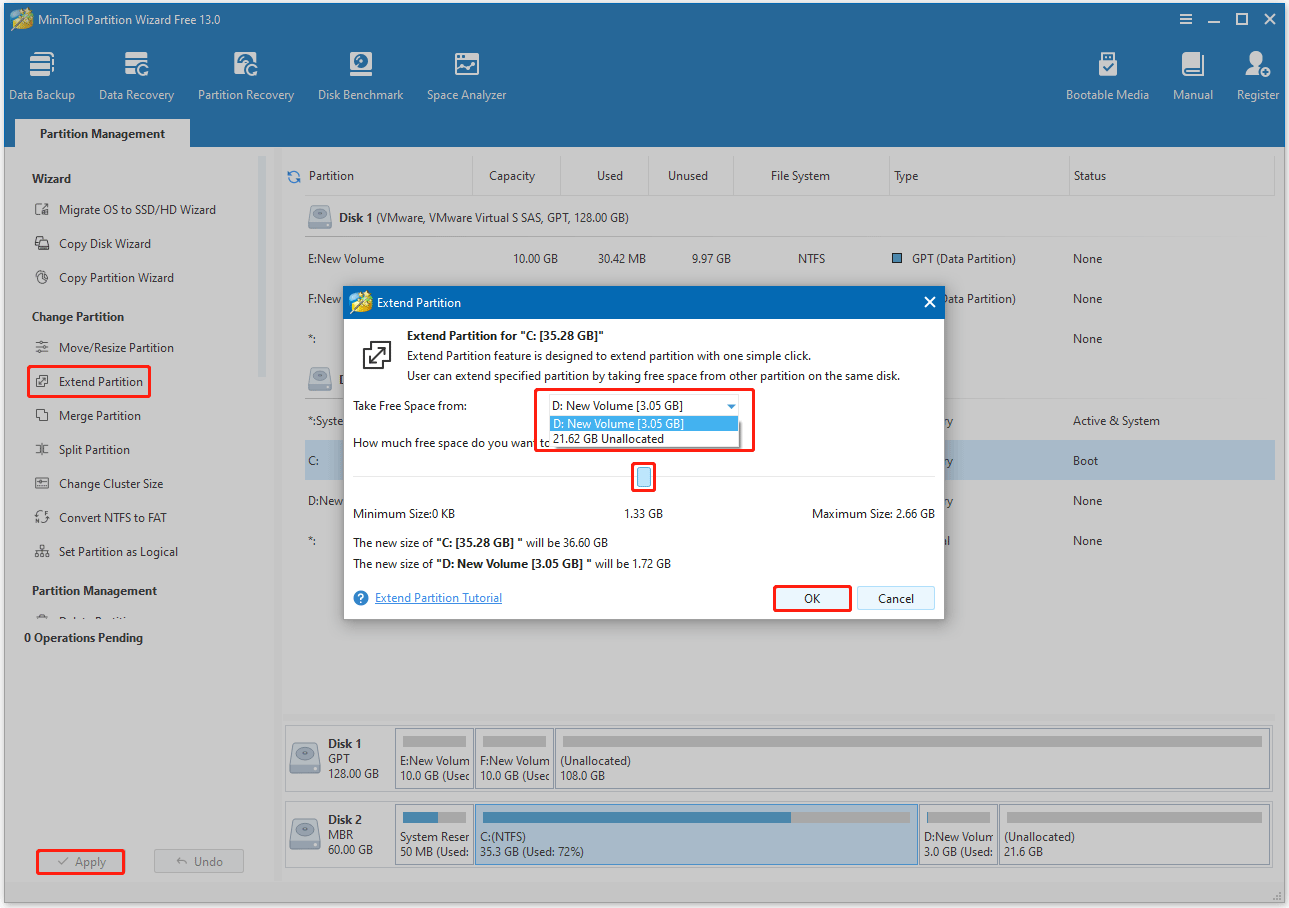
Move/Resize Partition
- Highlight the partition and select Move/Resize Partition from the left action panel.
- Drag the sliding handle to the right/left to extend the partition. Then click OK to continue. You can also manually type a larger partition size.
- Click Apply to execute the operation.
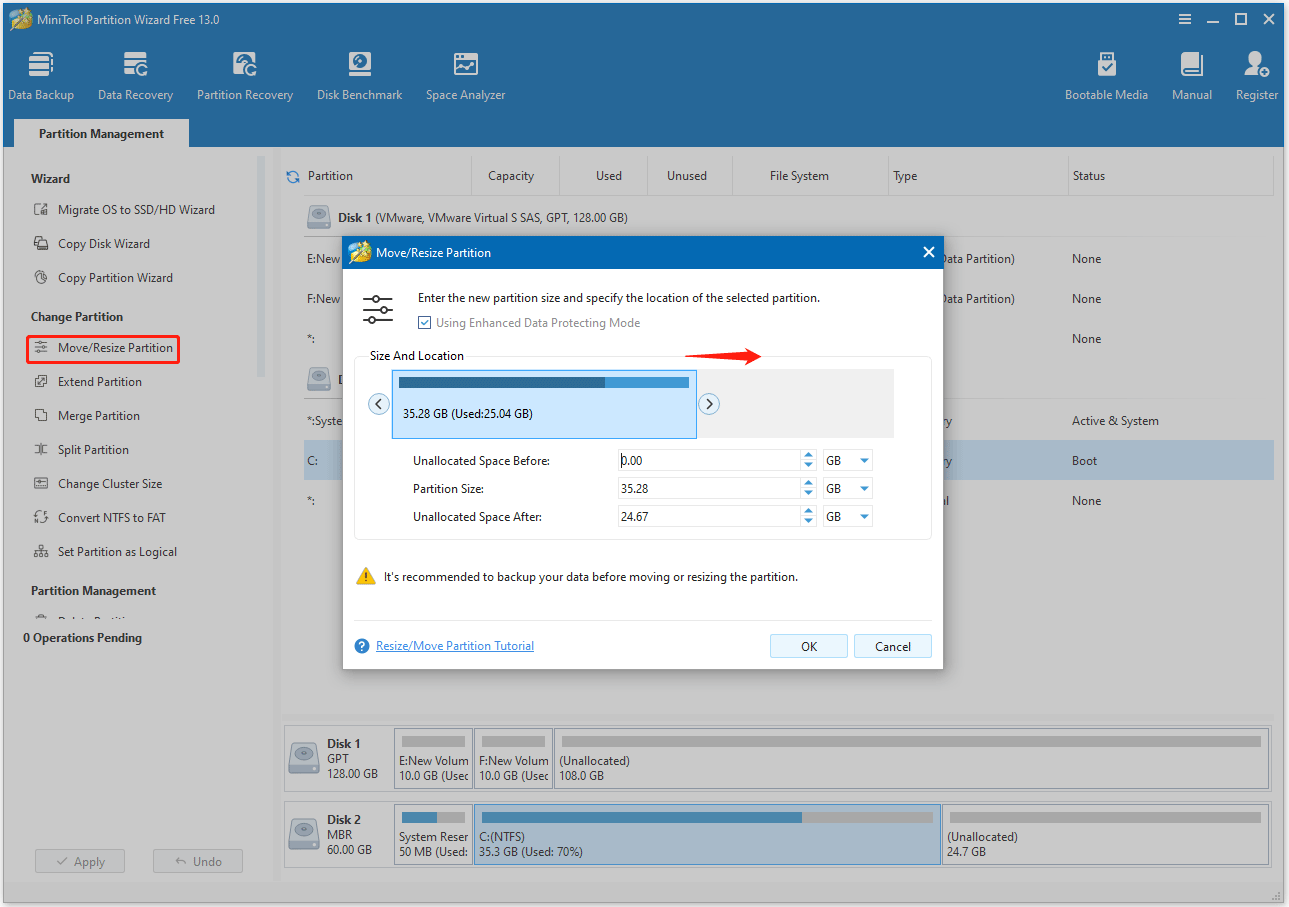
#3. Command Prompt
DiskPart is a command-line tool for advanced disk management. It’s powerful but risky. Only use this if you’re comfortable with command lines.
You should make sure there is adjacent unallocated space to the right of the partition. The steps are as follows:
Step 1. Press Win + R to open Run. Type diskpart and then press Enter.
Step 2. In the DiskPart window, type the following commands and press Enter after each one.
- list disk (This shows all your disks.)
- select disk * (Replace * with the drive letter of the disk to extend)
- list partition (This shows all your partitions.)
- select partition * (Replace * with the partition number of the drive to extend.)
- extend (This command adds the unallocated space to the partition).
- exit (This will close DiskPart.)

Method 3. Add an External Hard Drive
Adding an external hard drive is the simplest and most effective way to increase your computer’s disk space. This method provides a significant amount of additional storage capacity immediately, without opening the computer case.
Using an external hard drive is generally cheaper and more portable than upgrading to an internal SSD.
However, most external hard drives connect via USB, and their data transfer speeds are typically lower than those of an internal hard drive directly connected to the motherboard.
Method 4. Add a Second Internal Hard Drive
If your computer (desktop/laptop) has free hard drive bays, adding a second internal hard drive is a simple way to expand storage space.
This is ideal if your current C drive is an SSD (fast but small capacity) and you need extra space to store files, games, or media.
Generally, desktop computers are always suitable for installing a second or even more hard drives because they usually have more than one hard drive bay.
However, not all laptops are suitable for installing a second hard drive. Some laptops only have one hard drive bay, meaning they can only install one hard drive.
Therefore, you should check the number of hard drive bays on your laptop before buying a second hard drive.
- Turn off your laptop and unplug the power cord.
- Turn the laptop over so the bottom is facing up. Then, remove the battery.
- Locate the hard drive bay and use a Phillips screwdriver to unscrew the screws holding the cover.
- Remove the cover, and you will see how many hard drive bays there are.
If it has free drive bays, try to add a second internal hard drive to your computer.
Method 5. Upgrade to a Larger Hard Drive
If your computer has only a hard drive bay and the current disk capacity is small, the most effective long-term solution is to upgrade to a larger hard drive.
This is especially true if you work with large files (e.g., 4K videos, 3D models, or massive game libraries) or run resource-intensive software.
Upgrading to a larger SSD not only gives you more space but also boosts performance.
Before that, it’s better to transfer data to the larger SSD, including the OS, partition, and important files.
MiniTool Partition Wizard can help you greatly with OS migration. It is a professional and reliable disk manager that offers the Migrate OS to SSD/HD feature to migrate OS and data from one disk to another. It can also clone HDD to SSD.
How to migrate the OS with this software? Here is the guide. Before that, connect the SSD to your computer with an NVMe/SATA to USB adapter.
MiniTool Partition Wizard DemoClick to Download100%Clean & Safe
Step 1. Start the migration with MiniTool Partition Wizard.
- Launch MiniTool Partition Wizard.
- Select the Migrate OS to SSD/HD Wizard feature from the left action panel.
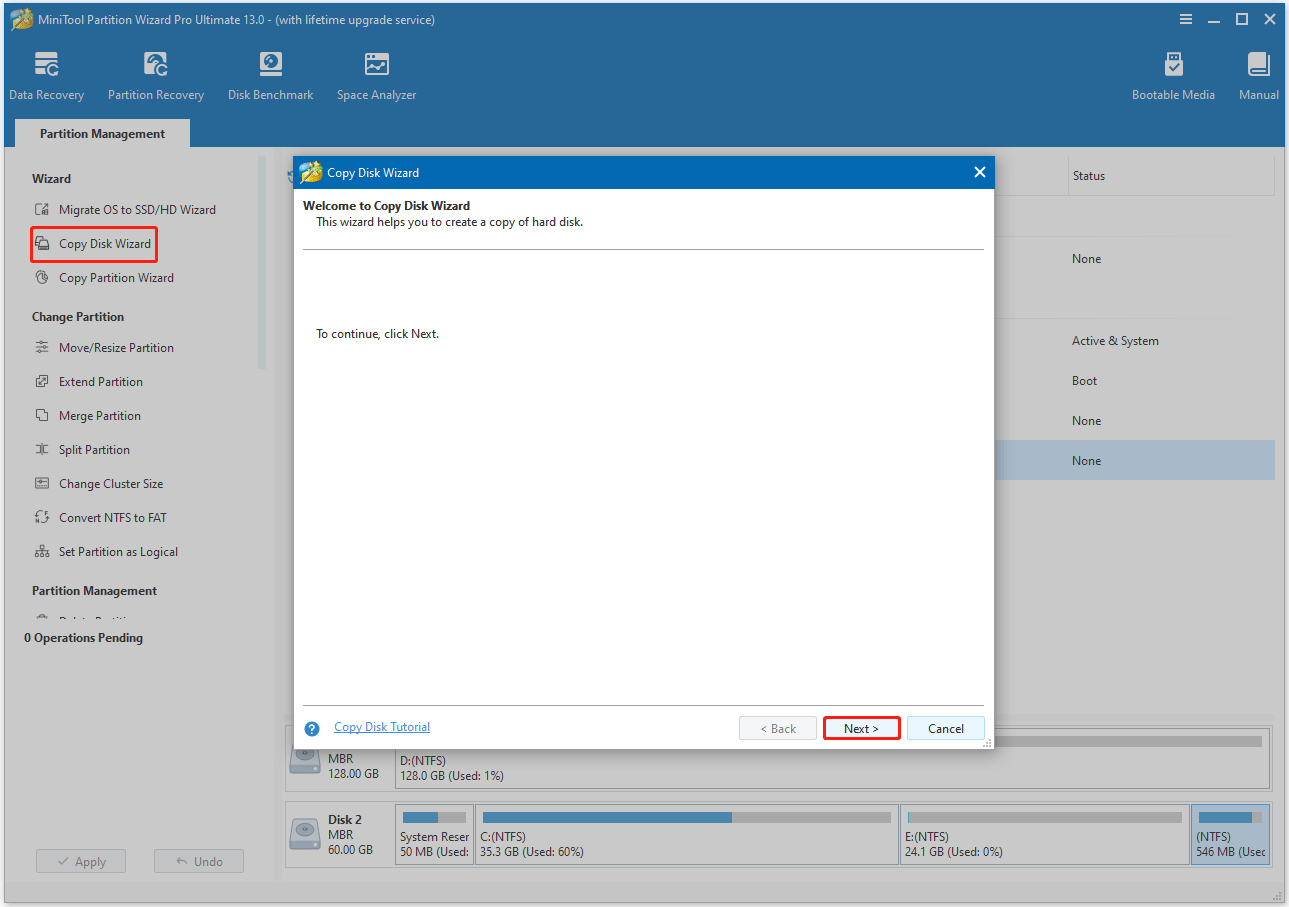
Step 2. Choose the migration method.
Choose a migration method, and then click Next.
- To transfer all the data to the new SSD, choose option A.
- To migrate the operating system only, choose option B.
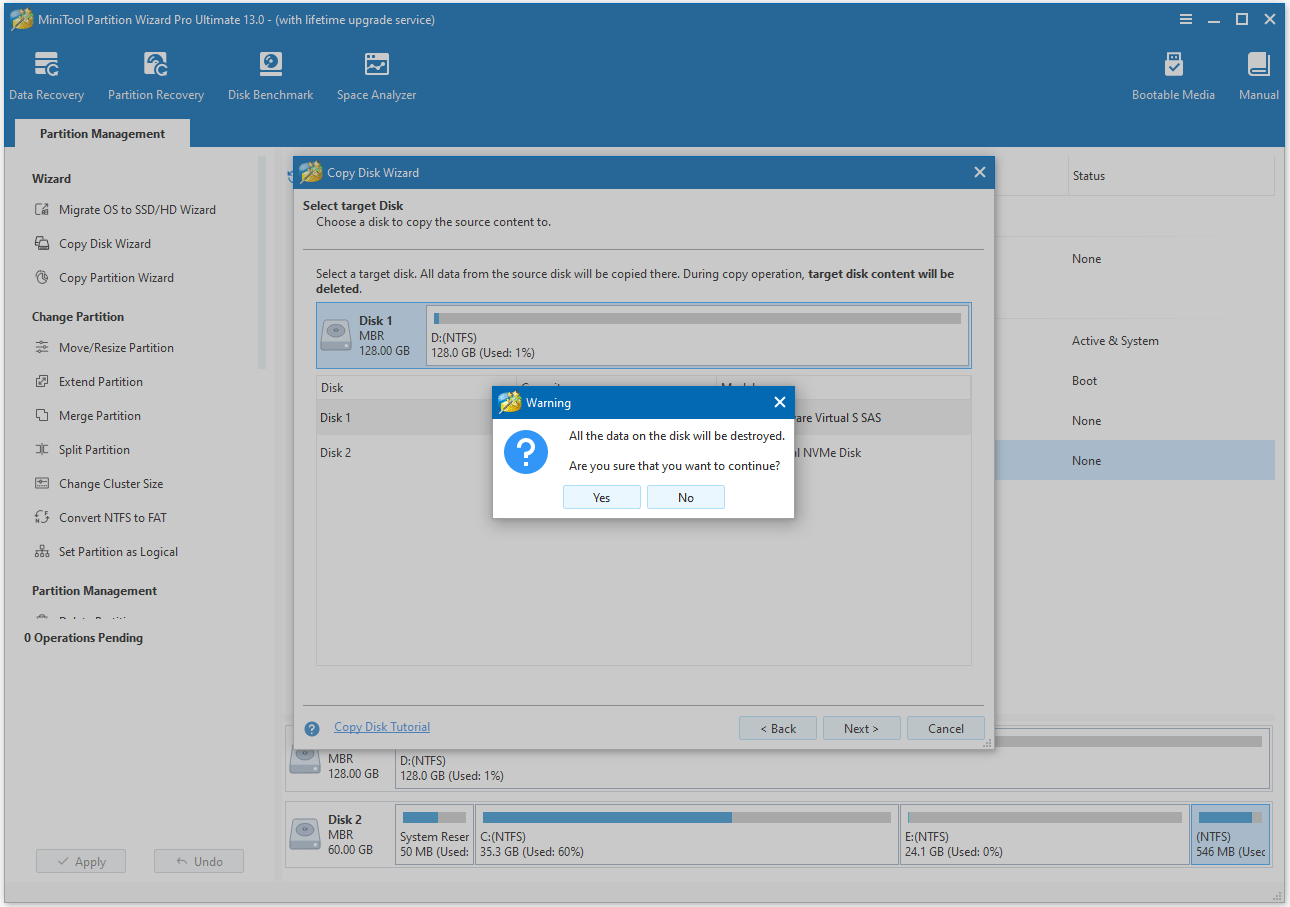
Step 3. Select the target disk and adjust copy options.
- Select the larger SSD as the target disk. You will be warned that all data on the SD will be erased.
- Review the copy options and disk layout. Keeping the default option is recommended. Then, click Next.
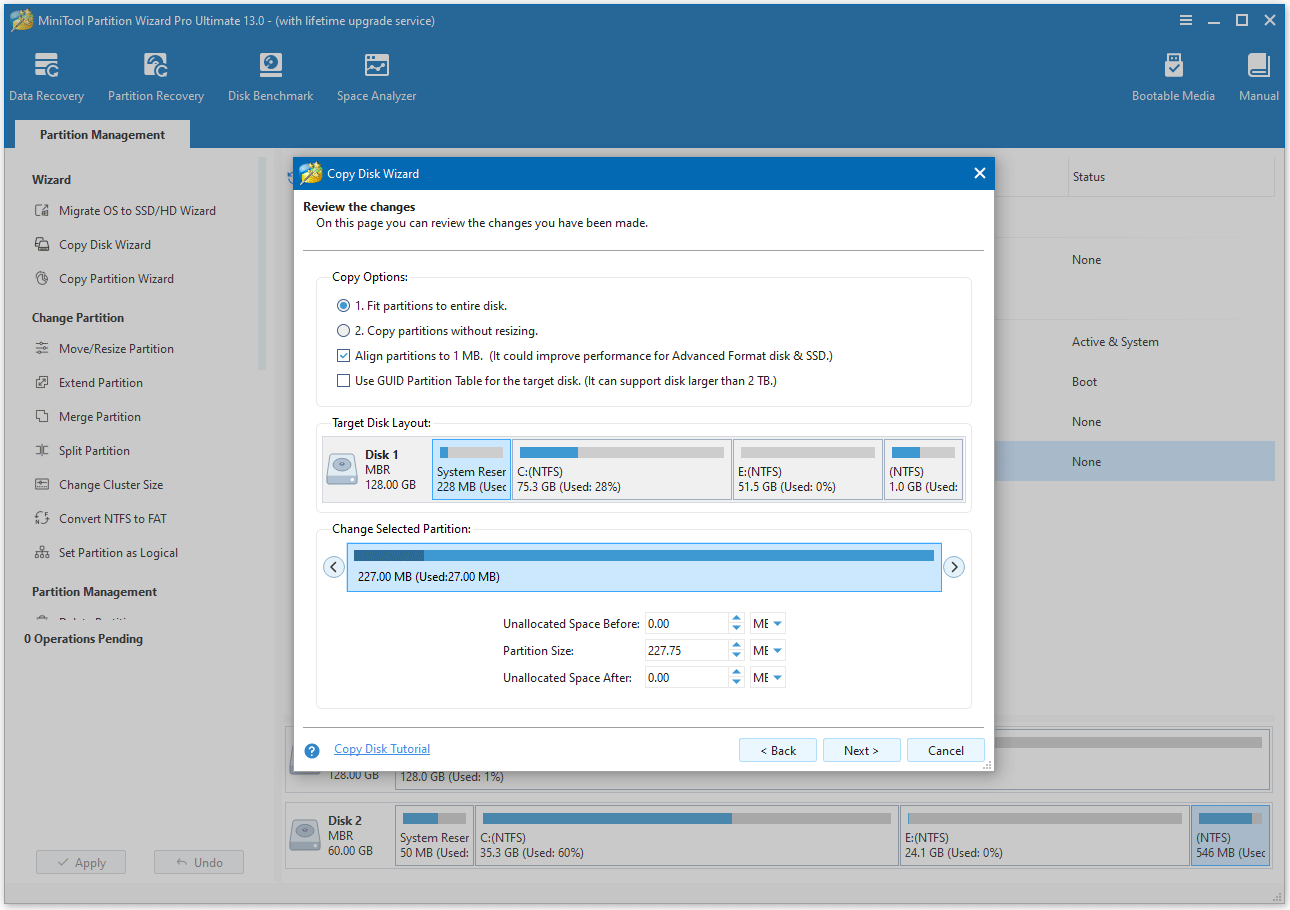
Step 4. Apply the cloning process.
- Read the NOTE information and click Finish.
- Preview the changes and click Apply to start the cloning process.
- Click Yes to confirm and allow the operation to proceed. The process may take some time to complete, especially for large disks.
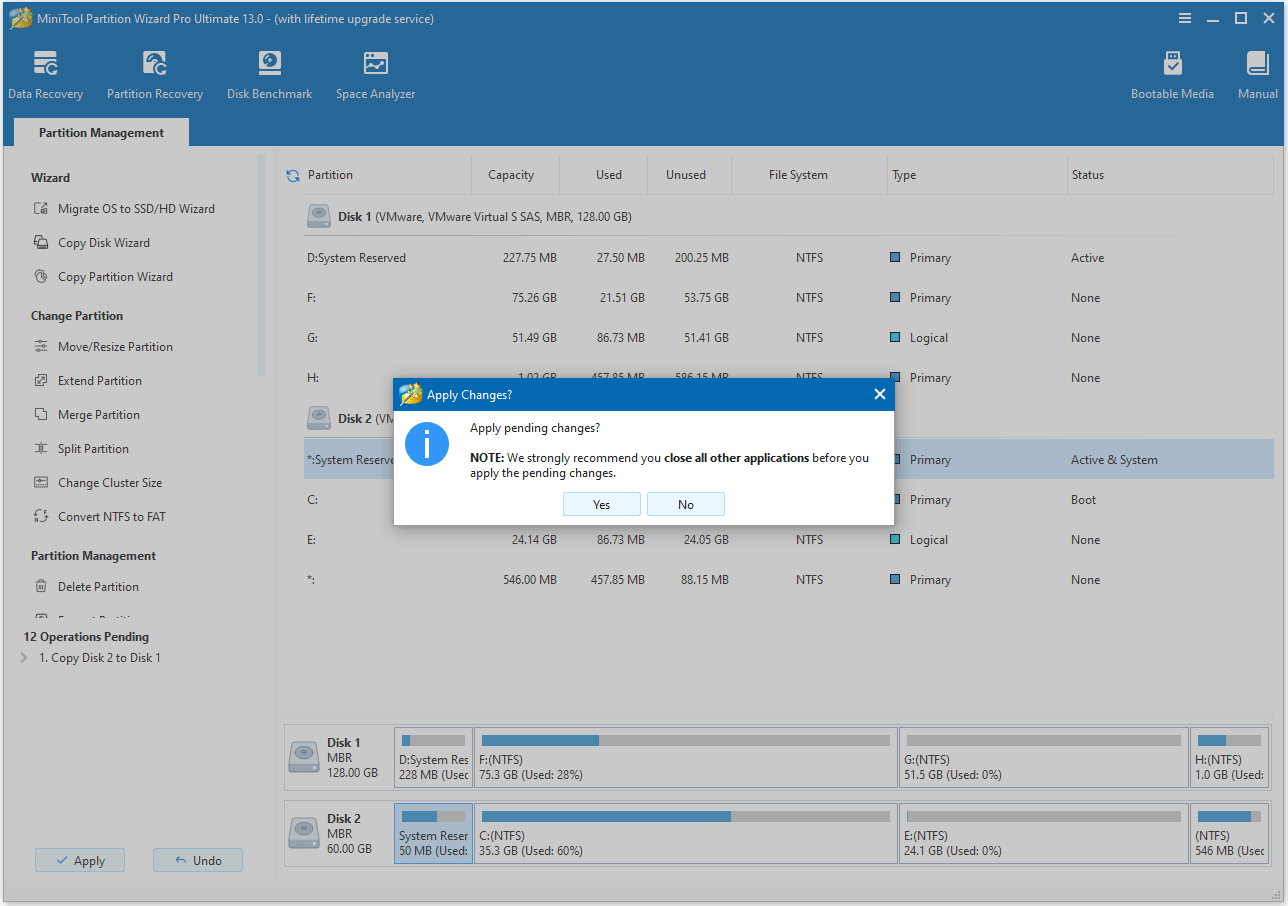
Once done, replace the old drive with the new SSD. Then go to BIOS and set the new SSD as the first boot order.
Method 6. Use Cloud Storage
Cloud storage is a great way to increase disk space by storing files online. It’s ideal for files that you don’t need to access offline (e.g., old photos or backups).
There are some Cloud Storage options for Windows:
- OneDrive: Integrated with Windows, automatically syncs Documents, Pictures, and Desktop folders.
- Google Drive: Use Google Backup and Sync to sync local files to the cloud and free up space.
- Dropbox: Great for file sharing and collaboration.
How to increase disk space on PC? This post provides 6 ultimate tips for you.Click to Tweet
How to Increase Disk Space FAQ
2. Monitor disk space regularly to detect problems early.
3. Avoid storing large files on the desktop (part of the C drive), as they consume valuable system space.
4. Regularly use free tools to scan and delete duplicate files.
Bottom Line
Increasing disk space in Windows is not just about freeing up space, but about increasing disk capacity. For most users, upgrading to a larger SSD or adding a secondary hard drive is the most sustainable solution.
If you have any problems or suggestions when using MiniTool Partition Wizard, contact us by sending an email to [email protected]. We’ll get back to you as soon as possible.

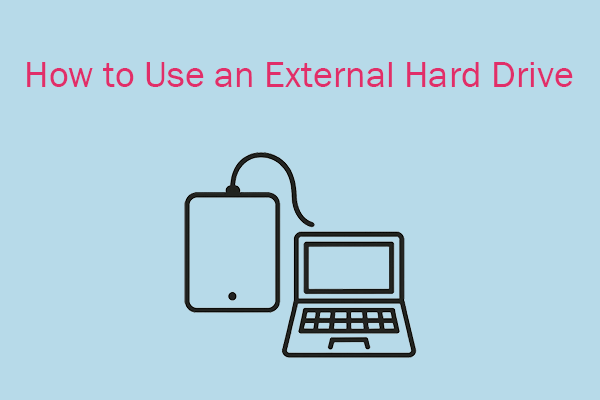
User Comments :